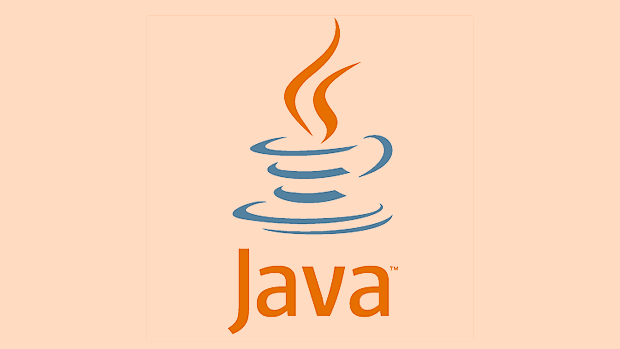What is Project Reactor and reactive programming in Java?
Reactive programming in Java is a paradigm for handling asynchronous data streams efficiently. It uses non-blocking operations and backpressure to manage high concurrency and real-time interactions. Project Reactor provides key tools like Flux (for multiple items) and Mono (for zero or one item) to build reactive pipelines. It integrates with Spring WebFlux, improves resource usage, simplifies error handling, and suits event-driven systems. However, it introduces complexity and may not be ideal for simple or blocking I/O-heavy applications.

Reactive programming in Java is a way to handle asynchronous data streams and events in a more manageable, scalable, and expressive way. It’s especially useful when dealing with high volumes of data or real-time interactions. Project Reactor is one of the most popular libraries for implementing reactive programming in Java.

It gives you tools like Flux and Mono, which let you work with sequences of data — whether that’s zero, one, or many items — in a non-blocking way. This means your application can stay responsive and efficient even under heavy load.
What Exactly Is Reactive Programming?
Reactive programming is a paradigm focused on handling data streams (like events, user inputs, or messages) that change over time. Instead of writing code that pulls data when needed, you define logic that reacts automatically when new data arrives.

In Java, this often looks like using streams that emit values over time, and operators that transform, filter, or combine those values. It's not too different from how you might use Java Streams, but instead of processing a fixed list, you're working with dynamic flows of data.
Some key concepts:

- Asynchronous: Operations don’t block the thread while waiting for results.
- Non-blocking: Your app doesn't get stuck waiting for slow I/O operations.
- Backpressure support: Handles cases where the producer emits data faster than the consumer can process it.
This makes reactive programming ideal for things like web APIs, event-driven systems, and real-time applications.
What Is Project Reactor?
Project Reactor is a reactive library built specifically for the JVM. It implements the Reactive Streams specification, which is a standard for asynchronous stream processing with non-blocking backpressure.
The two main building blocks are:
-
Mono: Represents a single-value or empty result (like a
CompletableFuture). -
Flux: Represents a sequence of 0..N items (like a
ListorStream, but reactive).
These types are lazy — nothing happens until you subscribe to them. That gives you fine-grained control over when and how computations occur.
Project Reactor integrates well with Spring WebFlux, making it easy to build fully reactive web applications.
Why Use Reactive Programming in Java?
If your application needs to scale efficiently or deal with asynchronous events, reactive programming can help a lot.
Here are some solid reasons to consider it:
- Efficient resource usage: Non-blocking I/O reduces thread usage and avoids wasting resources on idle threads.
-
Better error handling: Operators like
onErrorResumeorretrymake it easier to recover from failures. - Cleaner code structure: Using declarative operators keeps your logic organized and readable.
- Natural fit for event-based systems: Whether it's user actions, sensor data, or message queues, reactive patterns match well.
That said, it does come with a learning curve. Understanding how operators chain together and managing backpressure takes practice. But once you get comfortable, it becomes a powerful tool in your toolkit.
When Not to Go Reactive
Reactive programming isn’t always the best choice. If your app is simple, or relies heavily on blocking calls (like legacy databases), switching to reactive might add complexity without clear benefits.
Also, debugging reactive chains can be trickier than regular imperative code, especially if you're used to stepping through line-by-line execution.
So, unless you're aiming for high concurrency or building event-heavy systems, sticking with traditional synchronous approaches might be simpler.
Generally speaking, if you're building modern, scalable, and responsive Java applications — especially on the backend — getting familiar with reactive programming and Project Reactor is worth the effort. It opens up a cleaner, more efficient way to manage data flow in complex systems.
The above is the detailed content of What is Project Reactor and reactive programming in Java?. For more information, please follow other related articles on the PHP Chinese website!

Hot AI Tools

Undress AI Tool
Undress images for free

Undresser.AI Undress
AI-powered app for creating realistic nude photos

AI Clothes Remover
Online AI tool for removing clothes from photos.

Clothoff.io
AI clothes remover

Video Face Swap
Swap faces in any video effortlessly with our completely free AI face swap tool!

Hot Article

Hot Tools

Notepad++7.3.1
Easy-to-use and free code editor

SublimeText3 Chinese version
Chinese version, very easy to use

Zend Studio 13.0.1
Powerful PHP integrated development environment

Dreamweaver CS6
Visual web development tools

SublimeText3 Mac version
God-level code editing software (SublimeText3)
 Asynchronous Programming Techniques in Modern Java
Jul 07, 2025 am 02:24 AM
Asynchronous Programming Techniques in Modern Java
Jul 07, 2025 am 02:24 AM
Java supports asynchronous programming including the use of CompletableFuture, responsive streams (such as ProjectReactor), and virtual threads in Java19. 1.CompletableFuture improves code readability and maintenance through chain calls, and supports task orchestration and exception handling; 2. ProjectReactor provides Mono and Flux types to implement responsive programming, with backpressure mechanism and rich operators; 3. Virtual threads reduce concurrency costs, are suitable for I/O-intensive tasks, and are lighter and easier to expand than traditional platform threads. Each method has applicable scenarios, and appropriate tools should be selected according to your needs and mixed models should be avoided to maintain simplicity
 Best Practices for Using Enums in Java
Jul 07, 2025 am 02:35 AM
Best Practices for Using Enums in Java
Jul 07, 2025 am 02:35 AM
In Java, enums are suitable for representing fixed constant sets. Best practices include: 1. Use enum to represent fixed state or options to improve type safety and readability; 2. Add properties and methods to enums to enhance flexibility, such as defining fields, constructors, helper methods, etc.; 3. Use EnumMap and EnumSet to improve performance and type safety because they are more efficient based on arrays; 4. Avoid abuse of enums, such as dynamic values, frequent changes or complex logic scenarios, which should be replaced by other methods. Correct use of enum can improve code quality and reduce errors, but you need to pay attention to its applicable boundaries.
 Understanding Java NIO and Its Advantages
Jul 08, 2025 am 02:55 AM
Understanding Java NIO and Its Advantages
Jul 08, 2025 am 02:55 AM
JavaNIO is a new IOAPI introduced by Java 1.4. 1) is aimed at buffers and channels, 2) contains Buffer, Channel and Selector core components, 3) supports non-blocking mode, and 4) handles concurrent connections more efficiently than traditional IO. Its advantages are reflected in: 1) Non-blocking IO reduces thread overhead, 2) Buffer improves data transmission efficiency, 3) Selector realizes multiplexing, and 4) Memory mapping speeds up file reading and writing. Note when using: 1) The flip/clear operation of the Buffer is easy to be confused, 2) Incomplete data needs to be processed manually without blocking, 3) Selector registration must be canceled in time, 4) NIO is not suitable for all scenarios.
 How Java ClassLoaders Work Internally
Jul 06, 2025 am 02:53 AM
How Java ClassLoaders Work Internally
Jul 06, 2025 am 02:53 AM
Java's class loading mechanism is implemented through ClassLoader, and its core workflow is divided into three stages: loading, linking and initialization. During the loading phase, ClassLoader dynamically reads the bytecode of the class and creates Class objects; links include verifying the correctness of the class, allocating memory to static variables, and parsing symbol references; initialization performs static code blocks and static variable assignments. Class loading adopts the parent delegation model, and prioritizes the parent class loader to find classes, and try Bootstrap, Extension, and ApplicationClassLoader in turn to ensure that the core class library is safe and avoids duplicate loading. Developers can customize ClassLoader, such as URLClassL
 Handling Common Java Exceptions Effectively
Jul 05, 2025 am 02:35 AM
Handling Common Java Exceptions Effectively
Jul 05, 2025 am 02:35 AM
The key to Java exception handling is to distinguish between checked and unchecked exceptions and use try-catch, finally and logging reasonably. 1. Checked exceptions such as IOException need to be forced to handle, which is suitable for expected external problems; 2. Unchecked exceptions such as NullPointerException are usually caused by program logic errors and are runtime errors; 3. When catching exceptions, they should be specific and clear to avoid general capture of Exception; 4. It is recommended to use try-with-resources to automatically close resources to reduce manual cleaning of code; 5. In exception handling, detailed information should be recorded in combination with log frameworks to facilitate later
 How does a HashMap work internally in Java?
Jul 15, 2025 am 03:10 AM
How does a HashMap work internally in Java?
Jul 15, 2025 am 03:10 AM
HashMap implements key-value pair storage through hash tables in Java, and its core lies in quickly positioning data locations. 1. First use the hashCode() method of the key to generate a hash value and convert it into an array index through bit operations; 2. Different objects may generate the same hash value, resulting in conflicts. At this time, the node is mounted in the form of a linked list. After JDK8, the linked list is too long (default length 8) and it will be converted to a red and black tree to improve efficiency; 3. When using a custom class as a key, the equals() and hashCode() methods must be rewritten; 4. HashMap dynamically expands capacity. When the number of elements exceeds the capacity and multiplies by the load factor (default 0.75), expand and rehash; 5. HashMap is not thread-safe, and Concu should be used in multithreaded
 Explained: Java Polymorphism in Object-Oriented Programming
Jul 05, 2025 am 02:52 AM
Explained: Java Polymorphism in Object-Oriented Programming
Jul 05, 2025 am 02:52 AM
Polymorphism is one of the core features of Java object-oriented programming. Its core lies in "one interface, multiple implementations". It implements a unified interface to handle the behavior of different objects through inheritance, method rewriting and upward transformation. 1. Polymorphism allows the parent class to refer to subclass objects, and the corresponding methods are called according to the actual object during runtime; 2. The implementation needs to meet the three conditions of inheritance relationship, method rewriting and upward transformation; 3. It is often used to uniformly handle different subclass objects, collection storage and framework design; 4. When used, only the methods defined by the parent class can be called. New methods added to subclasses need to be transformed downward and accessed, and pay attention to type safety.
 Effective Use of Java Enums and Best Practices
Jul 07, 2025 am 02:43 AM
Effective Use of Java Enums and Best Practices
Jul 07, 2025 am 02:43 AM
Java enumerations not only represent constants, but can also encapsulate behavior, carry data, and implement interfaces. 1. Enumeration is a class used to define fixed instances, such as week and state, which is safer than strings or integers; 2. It can carry data and methods, such as passing values through constructors and providing access methods; 3. It can use switch to handle different logics, with clear structure; 4. It can implement interfaces or abstract methods to make differentiated behaviors of different enumeration values; 5. Pay attention to avoid abuse, hard-code comparison, dependence on ordinal values, and reasonably naming and serialization.







